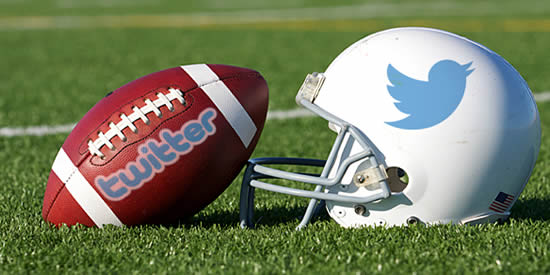|

|
ou don’t see TV commercials selling jets during the Super Bowl. But anyone in business aviation can learn lessons from the B2C advertisers dropping millions to be part of the game – and the conversation. |
As advertisers squeeze more ROI from each 30-second ad, they turn to the Internet. The Super Bowl ad season starts weeks in advance and lasts well past the final whistle. It involves a variety of screens – from your computer to your TV to your phone. And it involves multiple channels: Twitter, Facebook, YouTube, Instagram, Shazam and more.
The Growth of Social Networking
| During this year’s Super Bowl, 57% of the spots used a social hashtag, such as Coke’s #AmericaIsBeautiful or Chevy’s #SilveradoStrong. That’s up from 33% last year. The hashtag focuses discussion during the game but also well after the spot runs. And the hashtag isn’t just for Twitter anymore. It’s spread to all the major social networks, including Facebook. The game’s changing fast. It was only three years ago that Audi broke ground as the first advertiser to include a hashtag at the end of its 2011 Super Bowl spot. |
 |
Twitter Spikes Facebook The immediacy of Twitter makes it a go-to channel for events. It generated 25 million tweets during the Super Bowl, up from 24 million during last year’s game. Just as you invite your best buds over to share the game, social media expands the party to friends everywhere. Seattle Seahawks Percy Harvin’s second-half kickoff generated 381,605 tweets per minute, blasting past the previous 231,500 tweets-per-minute record set during the 2013 Super Bowl blackout.
 |
You can’t count Facebook out, of course, with its more than a billion monthly active users. Nine of the 10 top-trending terms on Facebook this past Monday morning were Super Bowl related. But for events like the Super Bowl, it lags behind for real-time discussion. |
Why? Well, it’s easy to draw comparisons between target-demographics and such, but really it’s about immediacy. Ad folks know how Facebook tinkers with news feeds and how people view their feeds a few times a day to catch up, but Twitter delivers pure, immediate gratification. It takes the first step towards the eventual chain of events that ends with that email from your grandma sharing the ad six months after it went viral. Get in the Game Brands are taking advantage of massive viewership and TV spots during the game to instantly communicate with people digitally and push brand awareness further. A real-time opportunity presented itself last year when the stadium mysteriously and suddenly went black. Within minutes, Oreo memorably tweeted about the blackout. The timeliness became notable enough that Oreo (and other brands such as M&Ms and Tide) captured viral attention. Again, it was about immediacy. Notably, this year, Oreo remained in the game by removing itself from it. @Oreo tweeted before the game started, “Hey guys . . . enjoy the game tonight. We’re going dark. #OreoOut.” Bravo. Some companies may not feel they have a use for social media, or particularly for real-time social media such as Twitter. They might want to rethink that. Being able to add your brand’s voice at a moment’s notice through the go-to, instant-information source is what brings key value to social media. Just because you may not have the staff to support a full-blown social media effort doesn’t mean you should ignore it entirely.
| The trends show that Twitter especially has become where people go for immediate news, timely updates and conversation. It’s crucial you take advantage of that and take part in conversation about your brand, especially for damage control if needed. It’s not all about Twitter, though. |
 |
Augment Those Ads It’s likely you haven’t let your smartphone or tablet out of your sight for years now. That means brands are starting to find ways to take advantage of those extra screens. Emerging tactics include ads with additional content beyond the commercial itself. Whether the ads encourage a hashtag for tweets, visiting a website for more information or hitting YouTube for the extended commercial, they’re becoming more and more pervasive. It’s no longer enough to just have a creative ad. The value comes from spurring conversations on Twitter, comments on YouTube and shares on Facebook. It’s engineered virality at its finest. The CDC should issue a warning. It’s important to remember, however, that any successful effort to extend your advertising from one medium to another relies on a compelling message. It does no good to end a TV commercial with “Continued at . . . ” if your creative is so boring that no one cares enough to follow the message to its next destination. Benefits for Everyone If you’re interested in bulking up your marketing, consider what some the best agencies in the world did on game day – and what they do after. It’s an exhibition of forward-thinking digital ideas. And these ideas trickle down, not just to those with the money to spend on Super Bowl spots. The takeaway is that the most successful campaigns use multiple channels to drive traffic online where conversations can lead to conversions. And that’s good business no matter whether you’re selling a cookie or a Challenger.
| ©BlueSky Business Aviation News | 6th February 2014 | Issue #258 |
| . |
 |
| BlueSky – your weekly business and executive aviation news – every Thursday |
| . |
 |
|





